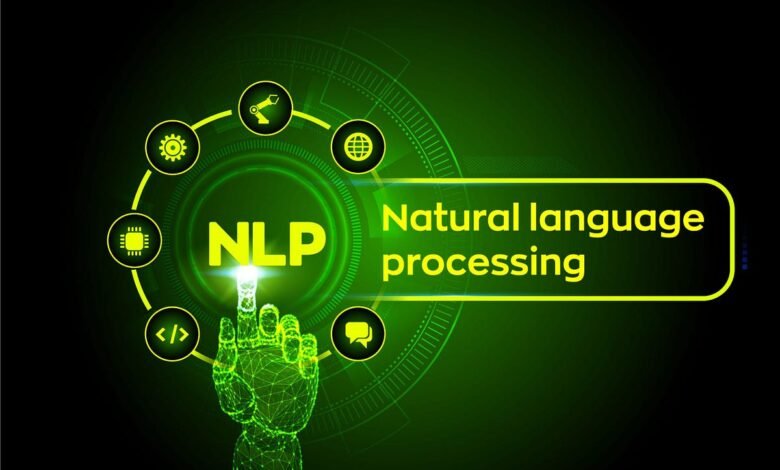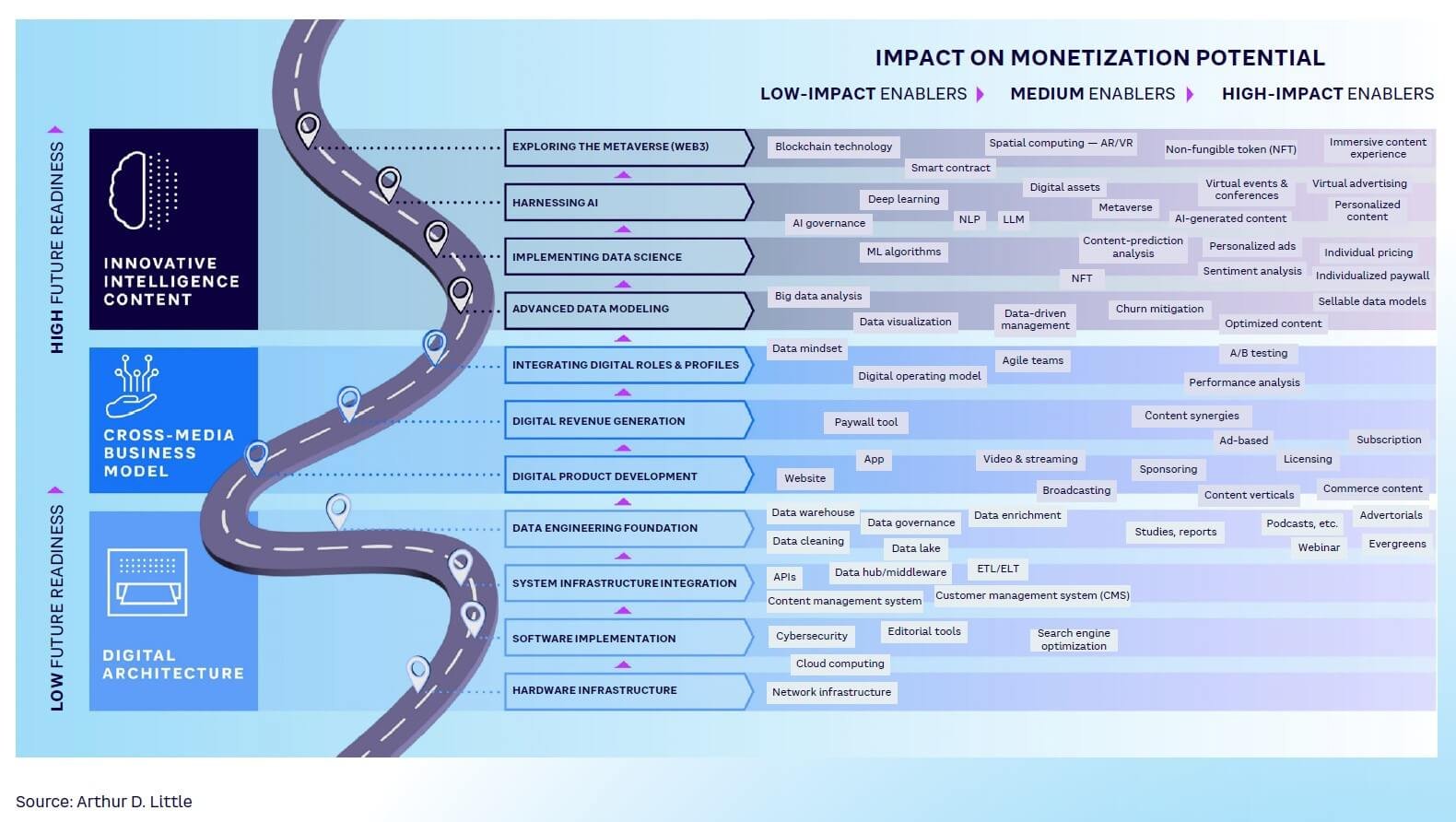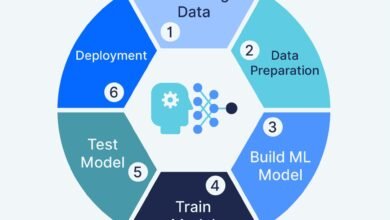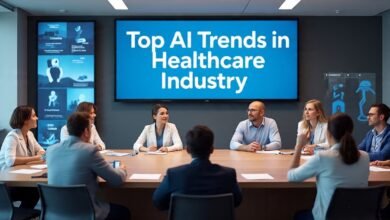The Future of Natural Language Processing Technology
Discover the future of Natural Language Processing technology, emerging trends, AI applications, and how NLP will transform industries by 2030

The landscape of natural language processing technology is evolving at an unprecedented pace, fundamentally transforming how machines understand, interpret, and generate human language. As we advance deeper into the digital age, NLP technology has become the cornerstone of artificial intelligence applications, powering everything from chatbots and virtual assistants to sophisticated content analysis systems and automated translation services.
Language Processing Technology represents one of the most significant technological breakthroughs of our time, bridging the gap between human communication and machines. The future of NLP promises revolutionary changes that will reshape industries, enhance human-computer interaction, and unlock new possibilities for automated language processing. From advanced transformer models and large language models to emerging applications in healthcare, finance, and education, NLP technology continues to push the boundaries of what’s possible in artificial intelligence.
The current trajectory of NLP advancements suggests that we’re on the cusp of achieving near-human level language comprehension and generation capabilities. Machine learning algorithms, particularly deep learning architectures, are becoming increasingly sophisticated, enabling a more nuanced of context, sentiment, and intent. As conversational AI and language models become more refined, businesses and individuals alike are discovering new ways to leverage these technologies for improved efficiency, better customer experiences, and enhanced communication.
This comprehensive exploration examines the cutting-edge developments in natural language processing technology, analyzing current trends, emerging applications, and the transformative potential of future innovations. We’ll delve into how NLP algorithms are evolving, the role of artificial intelligence in language processing, and the implications for various industries as we move toward a more interconnected, AI-driven future.
The Evolution of Natural Language Processing
From Rule-Based Systems to AI-Powered Solutions
The journey of natural language processing technology has been remarkable, transitioning from simple rule-based systems to sophisticated AI-powered language processing solutions. Early NLP systems relied heavily on predefined grammatical rules and dictionary-based approaches, which severely limited their ability to understand context and handle the complexities of human language.
The introduction of machine learning revolutionized the field, enabling systems to learn patterns from vast amounts of text data. Statistical models emerged as powerful tools for language, incorporating probability distributions and mathematical algorithms to process linguistic information more effectively. This shift marked the beginning of modern NLP technology, where systems could adapt and improve their performance based on training data.
Deep learning architectures, particularly neural networks, have further accelerated the evolution of natural Language Processing Technology. These sophisticated models can capture intricate relationships between words, sentences, and concepts, leading to more accurate text analysis and language generation capabilities. The development of recurrent neural networks (RNNs) and long short-term memory (LSTM) networks addressed the challenge of processing sequential data, enabling a better of context and temporal relationships in language.
The Transformer Revolution
The introduction of transformer models in 2017 marked a pivotal moment in the future of NLP. These revolutionary architectures abandoned the sequential processing limitations of previous models, introducing the concept of attention mechanisms that allow systems to focus on relevant parts of input text regardless of their position. Transformer architectures have become the foundation for most state-of-the-art language models, including BERT, GPT, and their successors.
Large language models built on transformer technology have demonstrated unprecedented capabilities in language and generation. These models, trained on massive datasets, can perform a wide range of NLP tasks, including translation, summarization, question answering, and creative writing with remarkable accuracy and fluency. The scalability of transformer models has enabled the development of increasingly powerful systems that approach human-level performance in many language processing tasks.
Current State of NLP Technology
Leading Technologies and Frameworks
Today’s natural Language Processing Technology landscape is dominated by several breakthrough technologies that are shaping the future of NLP. Large language models such as GPT-4, Claude, and Google’s PaLM represent the current pinnacle of language model development, demonstrating sophisticated reasoning abilities and multilingual competencies. These AI language models can engage in complex conversations, solve problems, and generate high-quality content across various domains.
Pre-trained language models have become the standard approach in modern NLP applications. By leveraging transfer learning, these models can be fine-tuned for specific tasks with relatively small amounts of domain-specific data. This approach has democratized NLP technology, making advanced language processing capabilities accessible to organizations with limited resources. BERT-based models, RoBERTa, and DistilBERT continue to serve as reliable foundations for many commercial applications.
The integration of multimodal AI capabilities is expanding the scope of natural language processing technology. Modern systems can now process and understand text in conjunction with images, audio, and video, creating more comprehensive AI solutions. This convergence is particularly evident in applications like visual question answering, image captioning, and multimedia content analysis, where NLP algorithms work alongside computer vision and audio processing technologies.
Real-World Applications and Success Stories
Language Processing Technology has found widespread adoption across industries, transforming business operations and user experiences. Conversational AI systems power customer service chatbots, virtual assistants, and support platforms, handling millions of interactions daily with increasing sophistication. Companies report significant improvements in customer satisfaction and operational efficiency through the deployment of NLP-powered solutions.
Content analysis and text mining applications are revolutionizing how organizations extract insights from unstructured data. Sentiment analysis tools help businesses monitor brand reputation, analyze customer feedback, and track market trends in real-time. Document processing systems automate the extraction and analysis of information from legal documents, medical records, and financial reports, reducing manual workload and improving accuracy.
Language translation services have achieved remarkable quality improvements through neural machine translation models. Real-time translation capabilities are breaking down language barriers in global communication, enabling seamless interactions between speakers of different languages. Educational platforms leverage NLP technology to provide personalized learning experiences, automated essay scoring, and intelligent tutoring systems that adapt to individual student needs.
Emerging Trends Shaping the Future

Advanced AI Integration and Multimodal Processing
The future of natural Language Processing Technology is increasingly characterized by deeper integration with other AI technologies and the development of multimodal systems. Computer vision and NLP convergence is creating powerful applications that can understand and describe visual content, answer questions about images, and generate multimedia content. These multimodal AI systems represent a significant step toward more comprehensive artificial intelligence that can process information across different sensory modalities.
Large language models are evolving beyond text-only processing to incorporate visual, audio, and structured data. This expansion enables more natural and intuitive human-computer interaction, where users can communicate through multiple channels simultaneously. Conversational AI systems are becoming more sophisticated in their ability to maintain context across different types of media, creating more engaging and effective user experiences.
The development of specialized NLP models for specific domains is another crucial trend. Domain-specific language models trained on medical literature, legal documents, or scientific papers demonstrate superior performance in their respective fields compared to general-purpose models. This specialization allows for more accurate text analysis, better named entity recognition, and more relevant information extraction in professional contexts.
Improved Contextual and Reasoning
Context-aware NLP systems are advancing rapidly, with models demonstrating increasingly sophisticated of implicit meanings, cultural references, and situational context. Advanced language models can now maintain coherent conversations over extended periods, remember previous interactions, and adapt their responses based on user preferences and historical context. This improvement in context is crucial for developing more natural and effective AI assistants.
Reasoning capabilities in language models are becoming more sophisticated, enabling systems to perform complex logical operations, solve mathematical problems, and engage in abstract thinking. Chain-of-thought prompting and similar techniques allow models to break down complex problems into manageable steps, demonstrating reasoning processes that were previously exclusive to human cognition. These advances are particularly valuable in educational applications, research assistance, and decision support systems.
The integration of knowledge graphs and structured data with natural language processing is enhancing the factual accuracy and reliability of AI systems. By connecting Language Processing Technology with verified knowledge bases, NLP applications can provide more accurate information, detect inconsistencies, and avoid generating misleading content. This integration is essential for building trustworthy AI systems that can be deployed in critical applications.
Efficiency and Accessibility Improvements
Model optimization and efficient NLP architectures are making advanced language processing capabilities more accessible and cost-effective. Distilled models, quantization techniques, and pruning methods are reducing the computational requirements of large language models while maintaining much of their performance. These improvements enable deployment of NLP technology on mobile devices, edge computing platforms, and resource-constrained environments.
Few-shot learning and zero-shot learning capabilities in modern language models are reducing the need for extensive training data and fine-tuning procedures. These approaches allow NLP systems to adapt to new tasks and domains with minimal examples, making the technology more versatile and practical for diverse applications. The ability to quickly adapt to new scenarios without extensive retraining represents a significant advancement in AI flexibility.
The development of open-source NLP frameworks and pre-trained models is democratizing access to advanced language processing capabilities. Platforms like Hugging Face, spaCy, and NLTK provide researchers and developers with powerful tools and pre-trained models that can be easily integrated into applications. This accessibility is fostering innovation and enabling smaller organizations to leverage state-of-the-art NLP technology.
Industry Applications and Transformations
Healthcare and Medical Applications
Natural Language Processing Technology is revolutionizing healthcare by automating the analysis of medical records, clinical notes, and research literature. Medical NLP systems can extract critical information from unstructured clinical text, identify relevant medical concepts, and support diagnostic processes. Electronic health record processing enables healthcare providers to quickly access patient information, track treatment outcomes, and identify potential drug interactions or adverse events.
Clinical decision support systems powered by NLP technology assist healthcare professionals in making informed treatment decisions by analyzing vast amounts of medical literature and patient data. These systems can identify relevant research findings, suggest treatment protocols, and alert clinicians to potential complications. Drug discovery applications leverage text mining and information extraction to identify promising compounds and understand disease mechanisms from scientific literature.
Patient communication and health monitoring are being enhanced through conversational AI systems that can provide personalized health information, medication reminders, and symptom tracking. These applications improve patient engagement and adherence to treatment plans while reducing the workload on healthcare providers. Mental health applications use sentiment analysis and natural language to monitor patient well-being and provide appropriate interventions.
Financial Services and Risk Management
The financial industry is leveraging natural language processing technology for fraud detection, risk assessment, and regulatory compliance. Text analysis of financial documents, news articles, and social media content helps identify market trends, assess credit risk, and detect potential fraudulent activities. Automated document processing streamlines loan applications, insurance claims, and regulatory reporting, reducing processing time and improving accuracy.
Algorithmic trading systems incorporate NLP-powered news analysis and sentiment extraction to make informed investment decisions based on market sentiment and emerging trends. Real-time sentiment analysis of financial news, earnings reports, and social media discussions provides valuable insights for portfolio management and risk mitigation strategies.
Customer service in financial institutions is being transformed by intelligent chatbots and virtual assistants that can handle complex inquiries, process transactions, and provide personalized financial advice. These systems understand financial terminology, regulatory requirements, and customer needs, enabling more effective and efficient customer support.
Education and E-Learning Platforms
Educational technology is being revolutionized by natural Language Processing Technology applications that provide personalized learning experiences, automated grading, and intelligent tutoring. Adaptive learning systems analyze student responses and learning patterns to customize content delivery and identify areas where additional support is needed. Essay scoring and plagiarism detection systems help educators provide timely feedback while maintaining academic integrity.
Language learning applications leverage NLP technology to provide pronunciation feedback, grammar correction, and conversational practice opportunities. Intelligent tutoring systems can engage students in natural language conversations, answer questions, and provide explanations tailored to individual learning styles and proficiency levels.
Content generation tools assist educators in creating lesson plans, assessment questions, and educational materials. These systems can adapt content to different grade levels, learning objectives, and pedagogical approaches, helping teachers provide more effective and engaging instruction.
Technological Challenges and Solutions
Data Privacy and Security Concerns
Data privacy remains a critical challenge in natural Language Processing Technology applications, particularly when dealing with sensitive personal, medical, or financial information. Privacy-preserving NLP techniques such as differential privacy, federated learning, and homomorphic encryption are being developed to enable language processing while protecting individual privacy. These approaches allow organizations to benefit from NLP technology without compromising data security.
Secure data handling protocols and encryption methods are essential for maintaining user trust in NLP applications. Organizations must implement robust security measures to protect text data throughout the processing pipeline, from collection and storage to analysis and output generation. Data anonymization techniques help remove personally identifiable information while preserving the linguistic structure needed for effective analysis.
Regulatory compliance with data protection laws such as GDPR and CCPA requires careful consideration of how NLP systems collect, process, and store personal information. Organizations must develop clear policies and technical safeguards to ensure compliance while maintaining the effectiveness of their Language Processing Technology capabilities.
Bias and Fairness in Language Models
Algorithmic bias in Language Processing Technology systems poses significant challenges for fair and equitable AI deployment. Language models trained on biased data may perpetuate or amplify existing social biases, leading to unfair treatment of certain groups or individuals. Bias detection and mitigation techniques are being developed to identify and address these issues in NLP applications.
Fairness metrics and evaluation frameworks help assess the performance of NLP systems across different demographic groups and use cases. These tools enable developers to identify potential biases and implement corrective measures before deploying systems in production. Diverse training data and inclusive development practices are essential for creating more equitable AI systems.
Ethical AI development requires ongoing monitoring and adjustment of NLP models to ensure they operate fairly across different populations and contexts. Organizations must establish clear guidelines and accountability mechanisms to address bias-related issues and promote responsible AI development.
Computational Resource Requirements
Large language models require substantial computational resources for training and deployment, creating barriers to adoption for smaller organizations and researchers. Model optimization techniques such as knowledge distillation, pruning, and quantization are being developed to reduce resource requirements while maintaining performance. These approaches make advanced NLP capabilities more accessible and cost-effective.
Cloud computing platforms and AI-as-a-Service offerings provide scalable access to NLP technology without requiring significant infrastructure investment. These services enable organizations to leverage state-of-the-art language models through APIs and cloud-based platforms, democratizing access to advanced Language Processing Technology capabilities.
Edge computing solutions are enabling NLP applications to run on mobile devices and IoT platforms with limited computational resources. Lightweight models and efficient architectures specifically designed for edge deployment are expanding the reach of language processing technology to new use cases and environments.
Future Predictions and Roadmap

Next-Generation Model Architectures
The future of natural Language Processing Technology will likely see the emergence of new architectural innovations beyond current transformer models. Mixture of experts architectures, retrieval-augmented generation, and modular neural networks are promising approaches that could enable more efficient and capable language models. These innovations may address current limitations in computational efficiency, knowledge updating, and task specialization.
Neuromorphic computing and quantum computing technologies may revolutionize NLP processing by enabling new types of computations and dramatically increasing processing capabilities. As these technologies mature, they could enable language models with unprecedented scale and sophistication, potentially achieving artificial general intelligence in language and generation.
Continuous learning capabilities will allow NLP systems to adapt and improve over time without requiring complete retraining. These systems will be able to incorporate new information, learn from user interactions, and maintain up-to-date knowledge bases while preserving previously learned capabilities.
Integration with Emerging Technologies
Augmented reality and virtual reality platforms will increasingly rely on natural Language Processing Technology for more natural and intuitive user interfaces. Voice control, gesture recognition, and contextual will enable seamless interaction with virtual environments and digital objects. These integrations will create new possibilities for education, entertainment, and professional applications.
Internet of Things devices will incorporate NLP capabilities to enable voice-controlled smart homes, automated customer service systems, and intelligent personal assistants. Edge AI implementations will bring language processing closer to users, reducing latency and improving privacy while enabling more responsive and personalized experiences.
Blockchain technology may provide new approaches to decentralized NLP systems, enabling secure and transparent language processing services without relying on centralized providers. These systems could offer improved privacy, reduced dependency on large technology companies, and new economic models for AI services.
Timeline for Major Developments
Over the next 2-3 years, we can expect significant improvements in model efficiency, multimodal integration, and domain specialization. Few-shot learning capabilities will become more sophisticated, enabling NLP systems to quickly adapt to new tasks and domains with minimal training data. Real-time processing and low-latency applications will become more prevalent as hardware and software optimizations improve.
In the 5-7 year timeframe, conversational AI systems may achieve near-human levels of interaction quality across diverse topics and contexts. Reasoning capabilities will become more sophisticated, enabling AI assistants to solve complex problems and provide expert-level advice in specialized domains. Multilingual models will achieve high-quality performance across hundreds of languages, breaking down communication barriers globally.
Beyond 10 years, we may see the emergence of artificial general intelligence in language processing, with systems capable of and generating human language with the same fluency, creativity, and contextual awareness as humans. These systems could revolutionize education, research, creative industries, and human-computer interaction in ways we can barely imagine today.
Impact on Various Industries
Content Creation and Media
Natural language processing technology is transforming the content creation landscape, enabling automated writing, content optimization, and personalized content delivery. AI writing assistants help authors, journalists, and content creators improve their productivity while maintaining high-quality output. Content generation systems can produce articles, marketing copy, and creative writing based on specific requirements and style preferences.
Media monitoring and news analysis applications use NLP technology to track breaking stories, analyze public opinion, and identify trending topics across multiple sources. Automated summarization tools help news organizations process large volumes of information quickly, enabling faster response to developing stories and more comprehensive coverage.
Personalized content recommendations powered by natural language help platforms deliver more relevant content to users based on their interests, reading history, and engagement patterns. These systems analyze user preferences and content characteristics to create highly targeted content experiences.
Legal and Compliance
Legal technology applications leverageLanguage Processing Technology for contract analysis, legal research, and compliance monitoring. Document review systems can process thousands of legal documents to identify relevant clauses, potential risks, and compliance issues. Legal research platforms use NLP technology to search through vast databases of case law, statutes, and regulations to find relevant precedents and legal arguments.
Automated compliance monitoring systems analyze communications, documents, and transactions to identify potential regulatory violations and ensure adherence to industry standards. Risk assessment tools evaluate legal documents and business processes to identify potential liabilities and suggest mitigation strategies.
Legal chatbots and virtual assistants provide access to legal information and guidance for individuals and small businesses who may not have access to traditional legal services. These systems can answer common legal questions, provide document templates, and guide users through simple legal processes.
Manufacturing and Supply Chain
Supply chain optimization applications use natural language processing to analyze supplier communications, market reports, and logistics data to identify potential disruptions and optimization opportunities. Predictive maintenance systems analyze maintenance logs, sensor data, and technical documentation to predict equipment failures and schedule preventive maintenance.
Quality control processes incorporate NLP technology to analyze inspection reports, customer feedback, and warranty claims to identify quality issues and improvement opportunities. Vendor management systems use text analysis to evaluate supplier performance, contract compliance, and relationship quality.
Manufacturing documentation and knowledge management systems leverage NLP capabilities to organize, search, and retrieve technical information, work instructions, and best practices. These systems help workers access relevant information quickly and ensure consistent adherence to procedures and standards.
More Read: Latest Breakthroughs in Artificial Intelligence Technology
Conclusion
The future of natural language processing technology represents one of the most transformative technological developments of our time, with far-reaching implications across industries, societies, and human interaction patterns. As NLP systems become increasingly sophisticated, integrating advanced AI capabilities, multimodal processing, and contextual, they will fundamentally reshape how we communicate with machines and process information.
The convergence of large language models, transformer architectures, and emerging technologies like quantum computing and neuromorphic processing promises to unlock unprecedented capabilities in language and generation. While challenges around data privacy, algorithmic bias, and computational requirements persist, ongoing innovations in model optimization, ethical AI development, and accessibility are making advanced NLP technology more inclusive and responsible.
The next decade will witness remarkable advances in conversational AI, domain-specific applications, and human-computer interaction, ultimately leading toward more natural, intuitive, and powerful AI systems that enhance human capabilities rather than replace them. Organizations and individuals who embrace these technological advances while addressing their challenges will be best positioned to benefit from the revolutionary potential of natural language processing in creating a more connected, intelligent, and linguistically inclusive digital future.











